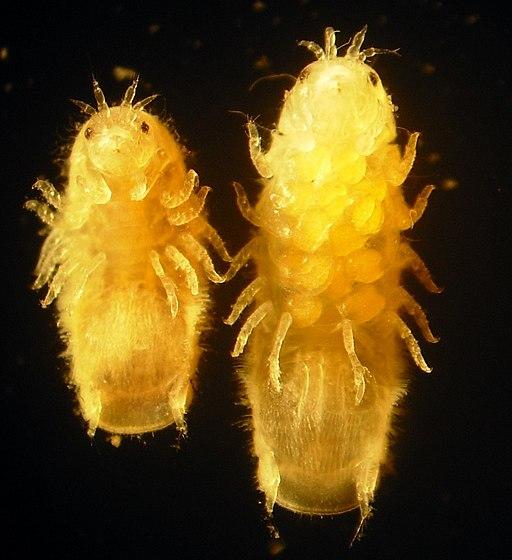The strong woody material of plants is a composite of 70% cellulose which we can break down to create fuels, chemicals and materials and lignin an outer coating that is quite hard to remove and makes getting at the cellulose difficult and therefore expensive. Nature provides pathways, fungi, termites and beetles manage the process aided by microbial friends. It turns out that a humble sea creature, the gribble, [1] has an alternative route we might exploit.
Gribble Digestion
About 22% of those woody fibers are turned into glucose by the little creatures using familiar enzymes. But how do they break down that lignin barrier to get at the goodies? Lignin is a particular type of polymers, still made up of identical components (monomers) but linked together without a regular repeat structure that enzymes can attack making them more resistant to degradation. Turns out the gribble “pre-treats” those wood fibers with sea water and a cousin to hemoglobin, the oxygen-carrying molecule in our blood, hemocyanin where hemoglobin’s iron molecule is replaced by copper has given it that green, well actually cyan, color.
The researchers through a series of experiment determined that the hemocyanin seemed to open up the lignin polymers so that cellulases, the enzymes responsible for breaking down cellulose could be active. Scientists then tested the gribble’s hemocyanin by pre-treating wood in a room temperature containing the compound and demonstrate significant increases in the amount of sugars released and that the hemocyanin could be re-used, that they acted as enzymes.
If nothing else, the study in its broader context makes you appreciate the wonderous quality of nature and evolution. Fungi, termites and our new friend the gribble all can digest these cellulose stores protected by lignins, but in different ways. Fungi go after the unprotected cellulose fractions first and then attack lignins with oxygen radicals, termites and beetles have symbiotic arrangements with their gut microbiome who do much of the heavy lifting. The gribble launches a full-on attack with hemocyanin. There is an old saying that for the man with a hammer everything looks like a nail, but nature and evolution allow their tools to be a bit more like a Swiss Army knife. Hemocyanin serves to transport oxygen in these creatures but has taken on another role, breaking down lignin.
Biomass is a renewable “feedstock” capable of producing fuels and a range of products and materials to better our lives. But most of the biomass we utilize are foods, like corn, and that leads to competition over who gets the feedstock, humans to eat or to process. Being able to find an inexpensive, sustainable feedstock that does not rely on corn or sugar cane is a bit closer because scientists have studied one of nature’s experiments, the gribble. Now can we reproduce that work and scale it to our needs?
If you liked this piece, please consider donating to support our work. Happy Holidays!
[1] For the scientifically inclined the gribble is a wood boring crustacean in the Limnoria species
Source: Hemocyanin facilitates lignocellulose digestion by wood-boring marine crustaceans Nature Communications DOI: 10.1038/s41467-018-07575-2




